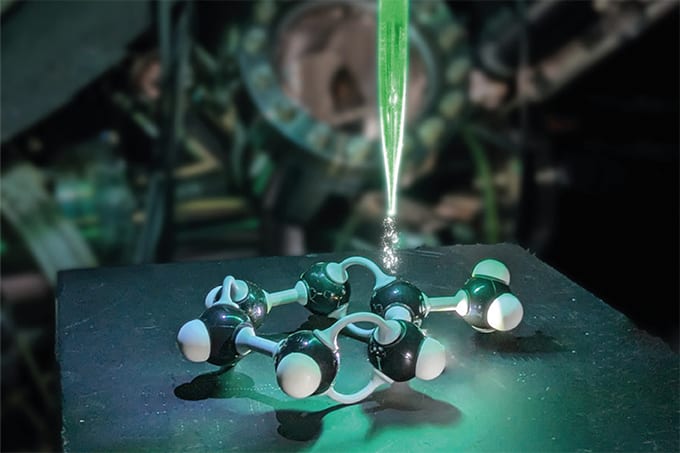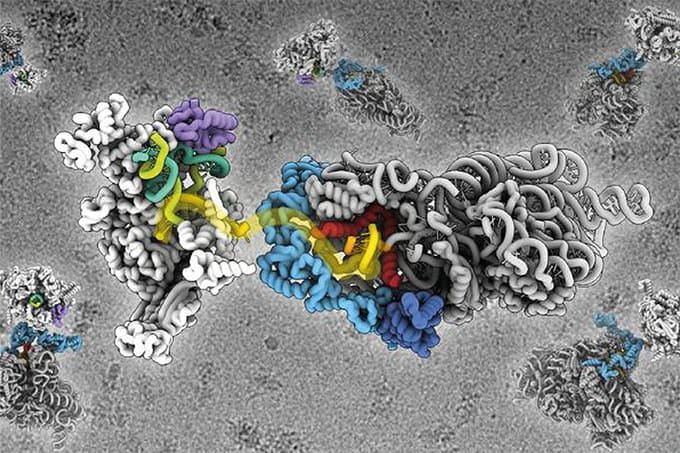
Biofilms are notoriously difficult to study: their nanoscale features hold the key to understanding attachment, growth, and resilience, but their collective behavior plays out across much larger surfaces. Atomic force microscopy (AFM) can capture exquisite detail – flagella, pili, even the extracellular matrix – but has traditionally been limited to fields of view just tens of micrometers wide.
In a study, researchers at Oak Ridge National Laboratory introduce an automated, large-area AFM system that bridges this gap. The platform integrates long-duration, high-resolution scanning with advanced image stitching and machine learning analysis, enabling seamless visualization of biofilm structure over millimeter-scale regions. Applying the method to Pantoea sp. YR343, the team uncovered honeycomb-like patterns of cell organization and revealed how flagella networks help guide attachment and cohesion – insights that would be invisible with smaller-scale imaging. The approach also proved effective in testing antifouling surface designs, highlighting its potential in both microbiology and materials science.
Here, Liam Collins, senior author of the study and a researcher at Oak Ridge National Laboratory, discusses the technical hurdles, interdisciplinary collaborations, and future directions for large-area AFM in biology.
What motivated the development of a large-area atomic force microscopy platform for studying bacterial biofilms?
The motivation was both technical and application-driven. Technically, we set out to overcome the inherent trade-off in AFM between achieving high resolution and being restricted to a small field of view. While AFM excels at imaging single cells, and even subcellular structures, it typically captures only tens of micrometers at a time. To give an analogy, studying macroscale biofilm formation is akin to trying to understand an entire forest when you can only examine a single tree up close.
Application-wise, bacterial biofilms present an incredibly complex, heterogeneous landscape at the micron scale, but their collective behaviors play out across much larger surfaces. We needed a way to map these structures with nanoscale detail, while covering areas large enough to capture their ecological patterns. The drive came from recognizing that current tools forced a choice between detail and coverage. Our aim was to have both.
What were the key analytical challenges in scaling AFM from nanoscale to biologically relevant surface areas?
AFM was designed for exquisitely small scans, so scaling to millimeter-scale areas without sacrificing resolution meant rethinking several important steps: sample navigation, sample stage control, imaging parameters, tip wear, and stitching massive datasets together. The microscope had to operate reliably for hours or even days without human intervention. That required robust automation and precision alignment across many image tiles.
You analyzed more than 19,000 bacterial cells using machine learning. What were the biggest hurdles in processing and interpreting that volume of high-resolution data?
The first challenge was sheer volume: gigabytes of data with each image containing rich morphological information. Processing at that scale demanded automated segmentation and classification algorithms that could handle subtle variations in cell shape and surface texture. This required us to generate manually annotated datasets for training the YOLOv8 segmentation model. Another hurdle was trust, ensuring that the machine learning models weren’t misclassifying rare or unusual morphotypes. We had to carefully curate training data and build validation checks into the pipeline.
Did any of the results surprise you?
Yes. From a biological standpoint, we saw micro-scale honeycomb-like spatial organization patterns that hinted at interactions between groups of cells and preferential orientations and a potential role of the flagella for conditioning the surface for cell attachment. This is something that would have been easy to miss with lower-resolution or smaller-area imaging. From a technical side, the stability and reproducibility of the automated system over such long scan durations was better than expected. Once dialed in, the microscope could run for days without human correction.
What role did interdisciplinary collaboration play in making the system function?
It was absolutely essential. AFM specialists understood the mechanical and control challenges, microbiologists provided insight into how to prepare and interpret living or fixed biofilms, and machine learning experts developed algorithms that could cope with biological variability. The project simply wouldn’t have worked without that cross-disciplinary dialogue – each team shaped decisions in the others’ domains.
What other systems or problems could benefit from this kind of large-area, high-resolution imaging?
Any field where micro-scale structure is important over macro-scale areas could benefit, such as corrosion mapping in materials science, tissue architecture in biomedical research, or large-scale mineralogical studies in geoscience. We’re already exploring applications in mapping bio-mineralization, monitoring cell-surface interactions, and even quantifying wear patterns on engineered surfaces.
Finally, what’s next for this platform?
Our next steps are to make the system even smarter. That means integrating real-time AI analysis so the microscope can “decide” what to scan next based on what it’s seeing, rather than following a pre-set path. Also using data fusion approaches will combine optical data and AFM data together to intelligently pick regions of interest, speeding up the acquisition process. We also want to push toward fully correlative workflows – linking AFM maps directly with optical or chemical imaging to get a multi-modal picture of biofilm systems.




